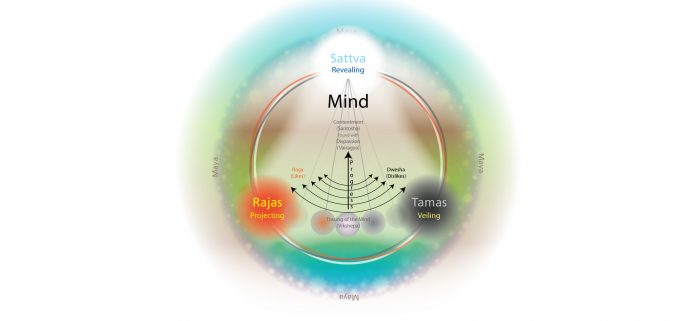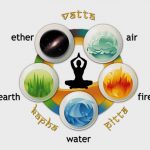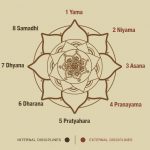Sattva, Rajas, Tamas personality test: 3 Best Gunas for Knowing Your Personality.
Ayurvedic philosophy provides an idea of the creation of the universe, from which the concept of Trigunas (Tri – 3 and Gunas – Qualities) of Nature evolved.
According to the philosophy of Ayurveda, there was just Darkness (un-manifest) at the onset of creation which implies Purusha (Consciousness) and Prakriti (Nature). The universe is the union or combination of Prakriti and Purusha (the Female and male aspects of creation).
Both are abstract entities according to Samkhya Philosophy, with Purusha remaining unchanged or inactive and Prakriti staying active and changeable.
What Are Trigunas?
There are 3 forms through which Prakriti manifests itself in a matter, known as Trigunas or 3 qualities of Nature. The word Prakriti also consists of 3 root words.
- Pra means Sattva Guna
- Kr means Rajas Guna
- Ti means Tamas Guna
Trigunas combines different compositions to develop the 5 elements of the body, which is also known as Pancha Maha-Bhoota.
| Triguna/ Combination of Trigunas | Predominant Elements of the Body |
| 1. Sattva | Akasa (Ether) |
| 2. Rajas | Vayu (Air) |
| 3. Sattva + Rajas | Agni (Fire) |
| 4. Sattva + Tamas | Jal (Water) |
| 5. Tamas | Prithvi (Earth) |
Further 5 elements fused together to form tri-doshas.
Characteristics of Trigunas
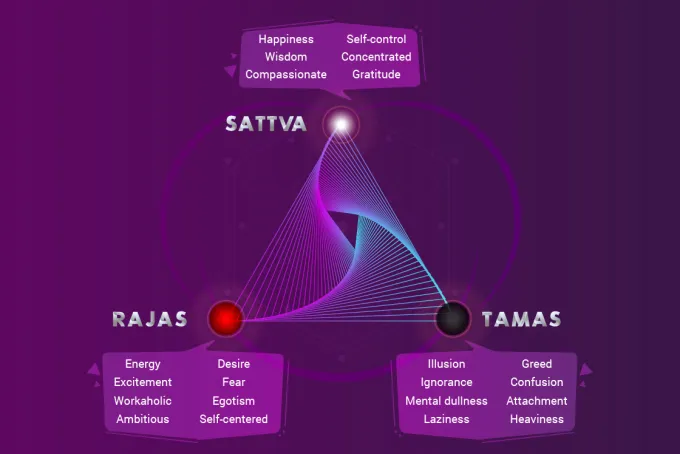
Look around yourself & within you, every single thing, living or non-living contains characteristics of Trigunas.
The matter surrounding you is movable, Blood continuously circulates because of Rajas Guna (activity) present in nature and the body.
You are able to stop your mind fluctuations for a while in meditation practice, it’s only possible because of Tamas Guna (inertia) present in the mind.
On the other hand, remember the times when my mind swings from here to there, it’s because of Rajas Guna. Also, In the state of deep meditation, when you feel your inner self, joy comes out of it because of Sattva Guna (balance).
Trigunas are present everywhere.
Got the picture?
Gunas Sattva Rajas Tamas personality test
The equilibrium between motion and inertia is known as sattva. Happiness, wisdom, spiritual connection, compassion, lightness of body and mind, self-control, concentration, gratitude, and selflessness are traits of the sattvic state. White serves as the symbol for the Sattva Guna.
Best Gunas Rajas
Rajas Guna is known for the ‘fickling & activity’ state among tribunals. Characteristics of Rajas guna are desire, fear, depression, anxiety, selfishness, excitement, workaholic, ambition, chaos, restlessness, and anger. Rajas Guna symbolizes with Red color.
Best Gunas Tamas
Its nature is one of Underactivity, as opposed to the overactivity of the Rajas guna and the equilibrium of the sattva. Trigunas have the lowest Tamas or TamoGuna. Dark color represents it. It stands for confusion, attachment, heaviness, laziness, greed, ignorance, and mental dullness.
Trigunas and Personality
You might have heard, this/that person has a good personality. What does personality mean?
In the modern day, Trigunas have been used to explain the idea of personality.
Trigunas are the fundamental aspects of your life as a person that influence the traits of everything tangible and immaterial in you. Your behavior, response, conceptualization, and comprehension of the nature of your environment will vary depending on how these three qualities are distributed in your personality.
A Study published in Research Gate describes:
The characteristics of inherited Gunas by an individual can be changed due to physical, psychological, and social influences. Also, it leads to the determination of the behavior of an individual at that particular time.
The proportion of each Guna may rise or fall anytime that certainly affects your personality and traits pertaining to a specific Guna or combination of Gunas.
How Trigunas Affect Personality?
Any changes in a human being, whether they be physical, mental, or psychological, start with the five components that make up their body. These five elements are sensed by the body’s five senses. Additionally, information gathered through the senses was transformed according to the dominant Guna after passing through the mind and intellect.
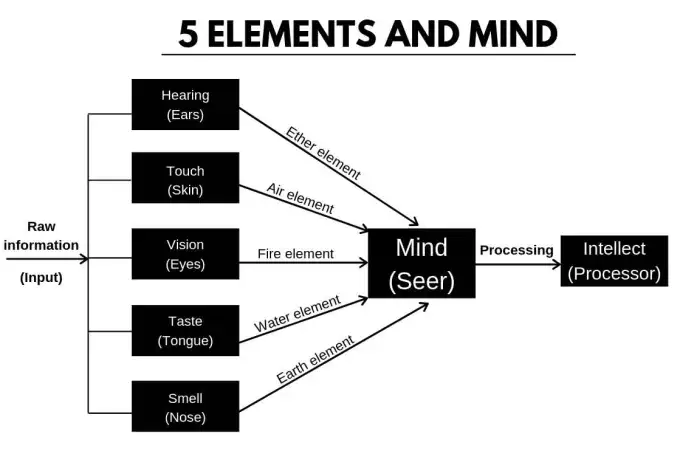
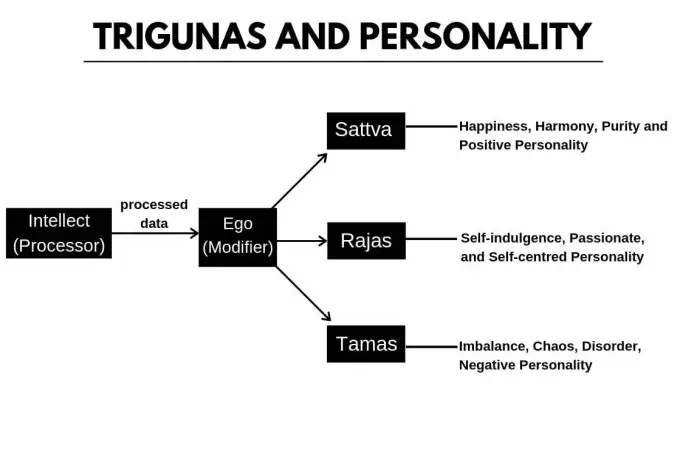
Every person possesses an ego that determines how they interpret processed material based on their intellect (Buddhi). Trigunas emanate from the ego, also known as the I-sensor or modifier, which determines a person’s personality, as shown in the figure above.
Now, what emerges from the raw material (gathered through the five senses) is referred to as a person’s personality, and it depends on the tribunals that are prominent at a specific time.
The Person With Sattva Guna
Sattva, which means “pure,” denotes your personality type. When your Sattva Guna is strong, you’ll naturally have a propensity for kindness and compassion, which means you have a Sattvic Personality.
Sattvic Guna is present in a correct proportion in you if you are:
- Mentally Strong
- Respect your Teachers (Gurus)
- Non-violent
- Kindred
- Self-controlled
- Meditative
The more sattvic your nature is, the more drawn you are to love, compassion, kindness, and attachment to happiness. So you shall remain healthy and disease-free in this state.
There are 7 types of sattvic personality a person is found in. Know here which one you are!
The Person With Rajas Guna
Raja’s people are very desirous and full of attachment. Due to their acute self-interest, sometimes they may face difficulties in differentiating between right and wrong. It’s called Rajasic Personality.
Rajas Guna is in the balanced proportion if you are:
- Enthusiast
- Deeply Interested
- Dedicated to Work
- Restless
- Self-centered
- Achiever
Raja refers to Passion, which lies between Sattva and Tamas acting as a catalyst or a bridge. Rajas balance Sattva and Tamas to create the motivation, and creativity for inspiring change, movement, and right action.
If a person’s Rajas Guna becomes out of balance, it has a counterproductive effect that can amplify anger, agitation, or anxiety. There are various organic approaches to lessen Rajas Guna’s excess.
The Person With Tamas Guna
Tamas, which translates to “darkness,” denotes a negative, passive, and illusionary mental state. The selfish, heartless, and cynical behavior that is indicative of Tamas Guna’s dominance is referred to as tamasic personality.
When your Tamasik Guna undergoes a shift, you will feel:
- Timely Sleep
- Balanced Diet
- Openness to others
- Appreciative in nature
- Concerned about others
- Active toward helping others
Someone who is unbalanced Short-lived enjoyment, materialism, possessive sentiments, and a strong desire to hurt others are only a few symptoms of Tamas Guna.
A book [efn_note] Dhanwantri: A Complete Guide to Ayurvedic Life [Source] [/efn_note] written by Harish Johari categorized People into 7 types based on the tribunals. These 7 types are the following.
-
People with dominant Sattva Guna.
-
People with dominant Rajas Guna.
-
People with dominant Tamas Guna.
-
People with a dominant Sattva–Rajas Guna combination.
-
People with dominant Sattva–Tamas Guna combination.
-
People with dominant Rajas–Tamas Guna combination.
-
People with balanced Gunas or with Sattva–Rajas–Tamas Guna combination.
The above list of Gunas shows that:
Trigunas never exist in isolation in a person and always act in conjunction with each other. Even trigonous compete with each other and dominating guna decides the Personality of a person.
Based on Trigunas, you would have known up until this point which personality best describes you.
How we control the Gunas within us for the benefit of ourselves and others is the question that now emerges.
Balancing the Gunas
Gunas in and of itself is not a physical quantity, however, these 3 methods can reveal its presence:
action we take
the purpose of the activity,
And response.
We can concentrate on balancing the Gunas that are within us by paying attention to these three aspects.
The Action & The Intention
All action is universally engendered by the attributes (Gunas) of primordial nature (Prakriti). A man whose self is deluded by egoity thinks, “I’m the doer” – Bhagavad Gita 3:27
The intention driving action is what triggers it. Every time you start working, ask yourself these questions to understand the Guna behind the action:
What I’m doing and why (Intention)
How I’m going about it (Manifestation)
Sometimes, depending on your stage of life, you may be carrying out work with Sattvic intentions (Why I’m Doing This), but the way you’re really doing it may be Tamasik or Rajasic.
For instance, a thief can have committed a crime in order to provide for their family. In this instance, the thief’s manifestation (how he acts) is Tamasik, but his motivation (why he acts) may be Sattvic. But Tamas is the dominant Guna.
You can balance the dominant Guna if you pay attention to the intention and manifestation of your task. Here, the connection between our actions and the outcomes of our labor starts.
Reaction
The way you respond to a task’s outcome determines who you are and what will continue to exist, develop, and reproduce inside of you.
Again using the same scenario, the thief’s heart must be overflowing with grief, tedium, and insult if he reflects on what he did (steal) (because sattva was there in his intention).
Although it is extremely unlikely, this cognitive process of reacting to the action might cause him to change his mind and for his Tamasik nature to shift into Sattva.
Rajas Guna: A Step From Tamas to Sattva
Everyone’s first thought is to increase the Sattva Guna ratio, but when they do so, they forget about the total equilibrium of the three taken together. Therefore, the strategy should be to maintain all three Gunas without putting too much emphasis on any one attribute.
A higher Sattva to Rajas or Tamas ratio will make you more ignorant, while a higher Rajas to Sattva ratio will make you feel more spiritually egotistic.
The recommended approach is to work on turning your Tamas into Rajas, and after Rajas has been accomplished, balance it to put the emphasis on a Sattva lifestyle.
Tamas to Rajas
For instance, if you are experiencing Tamasik qualities in your nature—such as depression, anxiety, irritability, and laziness—you can counteract their dominance by increasing your physical yoga asana practice, connecting with upbeat people, exploring new locations, and consuming light fare. These activities will assist you in increasing your energy (from inactivity to activity – From tamas to Rajas).
Rajas to Sattva
Your nature becoming more active is an indication of Rajas Guna supremacy. Compared to earlier, you would be more energized at this point (in Tamas Guna).
Engage in activities like meditation, reading, volunteering, and simple Yamas to balance the surplus energy inside of you to shift your focus from Rajas to Sattva.
What are the characteristics of Rajas Tamas Sattva?
The three attributes are Tamas (tendency toward lethargy and rigidity), Rajas (tendency toward ambition and activity), and Sattva (tendency toward selfless service), respectively. Satisfaction with life and perceived stress are the important determinants of one’s quality of life.
What are the three qualities of Sattva Rajas and Tamas?
From this ethereal Prakriti, the three primary gunas (qualities of energy) emerge creating the essential aspects of all nature—energy, matter, and consciousness. These three gunas are tamas (darkness & chaos), rajas (activity & passion), and sattva (beingness & harmony).
What are the 3 Trigunas?
Trigunas (Satva, Rajas, and Tamas) – The three fundamental features of nature. According to Ayurveda, man is made up of the five basic elements of nature, Panch Mahabhutas, that is Akasa (Ether or Space), Vayu (air), Tejas (fire), Ap (water), and Prithvi (Earth).
What are Rajas Guna foods?
While rajasic foods can provide one with a quick boost of energy, in excess they bring poor digestion, anxiety, irritation, and a lack of focus. Rajasic foods include coffee, alcohol, spices, chocolate, eggs, meat, garlic, and fermented or canned foods.
What is the color of Tamas?
Tamas: These colors are dull, dark, turbid, and muddy. They cause the mind and senses to become heavy, inert, and congested. Tamasic colors are brown, black, and grey. White and black are not really considered colors, but are polar opposites of light and dark, from which color is produced.
How do I get rid of Tamas Guna?
To overcome tamas guna, Avoid tamasic foods like meat, processed or stale foods, alcohol, root vegetables, carbs, and fats.
What are Rajas Guna foods?
While rajasic foods can provide one with a quick boost of energy, in excess they bring poor digestion, anxiety, irritation, and a lack of focus. Rajasic foods include coffee, alcohol, spices, chocolate, eggs, meat, garlic, and fermented or canned foods.
















